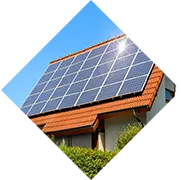are bifacial solar panels better
Are Bifacial Solar Panels Better?
In recent years, the renewable energy sector has seen significant advancements, and among these innovations, bifacial solar panels have gained considerable attention
. But what exactly are bifacial solar panels, and how do they compare to traditional monofacial panels? Let's explore the advantages and disadvantages to understand if bifacial technology is truly better.Bifacial solar panels are designed to absorb sunlight from both their front and rear sides. This unique design allows them to generate more electricity by capturing reflected light from the ground or other surfaces. In contrast, traditional monofacial panels only harness sunlight from one side. This means that bifacial panels can potentially produce 10% to 20% more energy under the right conditions, depending on the installation environment.
One of the key advantages of bifacial panels is their increased energy yield. The ability to capture albedo effect—where light reflects off surfaces like sand, snow, or concrete—makes bifacial panels especially effective in areas with bright, reflective environments. This additional energy production can lead to a quicker return on investment, making bifacial panels an attractive choice for residential and commercial installations alike.
are bifacial solar panels better

Moreover, bifacial panels tend to have a longer lifespan than traditional panels. Since they are designed to withstand harsher environmental conditions, such as high winds and snow loads, their durability is an important consideration for long-term investments in solar technology.
However, there are also some challenges associated with bifacial solar panels. One major factor is the cost. Bifacial panels are generally more expensive than their monofacial counterparts, due to the advanced materials and technology involved in their manufacturing. Hence, the initial investment might deter some buyers. Additionally, for optimal performance, bifacial panels require a specific installation setup, including considerations for tilt and orientation, which can complicate the installation process.
Another challenge is the need for a suitable environment. While bifacial panels can outperform monofacial panels in many locations, their benefits are maximized in areas with high reflectivity. For shaded locations or regions with dark soil, the performance advantage might diminish, making monofacial panels a more practical option.
In conclusion, whether bifacial solar panels are better depends largely on the specific circumstances of the installation. They offer significant advantages in energy generation and durability, but factors such as cost and site conditions will play crucial roles in determining their overall suitability. As solar technology continues to evolve, bifacial panels represent an exciting development in the quest for more efficient and sustainable energy solutions. As with any investment, prospective buyers should carefully evaluate their options to ensure they make the most informed decision for their energy needs.
-
Understanding the Advantages of Solar String Inverters for Your Energy SystemNewsApr.29,2025
-
Choosing the Right PV Inverter: A Comprehensive GuideNewsApr.29,2025
-
The Future of Solar Power: Exploring Bifacial Solar PanelsNewsApr.29,2025
-
The Complete Guide to Solar Panels: Efficiency, Cost, And InstallationNewsApr.29,2025
-
The Best Options for Efficiency and Cost-EffectivenessNewsApr.29,2025
-
Harnessing the Power of Off-Grid Solar Inverters for Energy IndependenceNewsApr.29,2025







